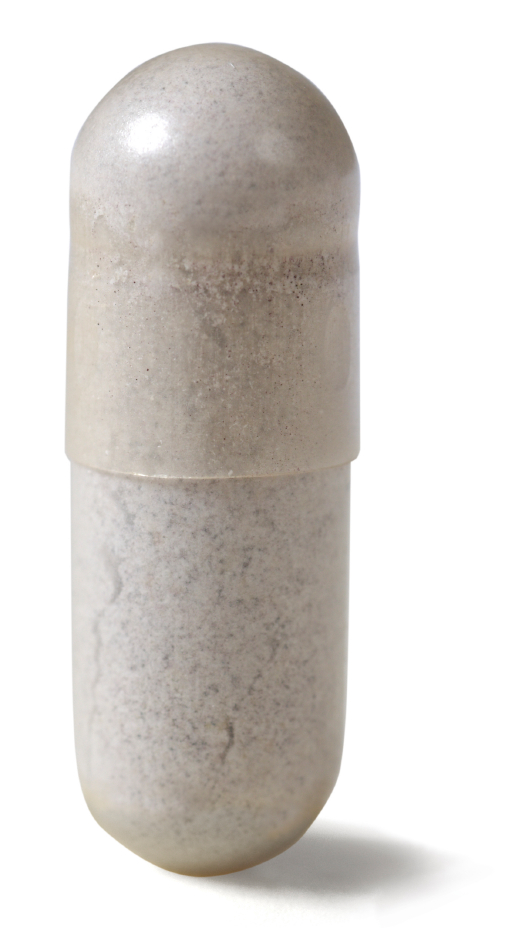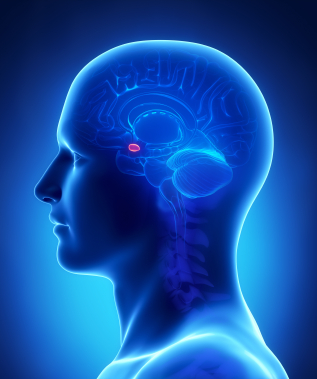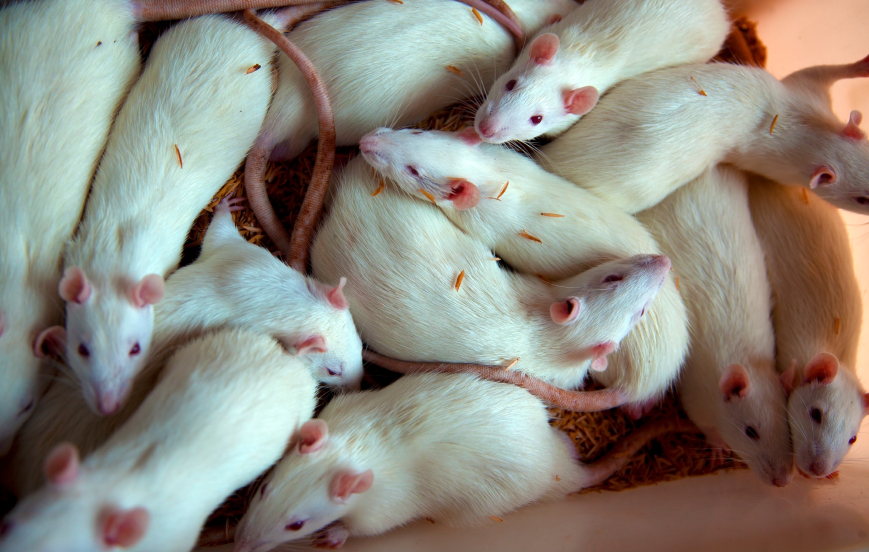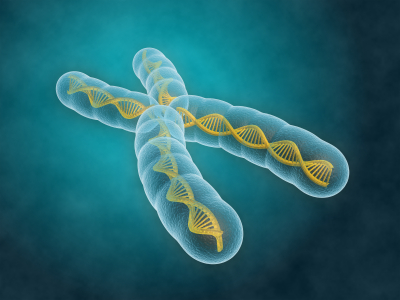Obesity Worsens Bipolar Disorder, Decreases Gray and White Matter in Brain
According to researcher David J. Bond at the 2014 meeting of the International Society for Bipolar Disorders, “Up to 75% of people with bipolar disorder (BD) are overweight or obese, and these patients suffer more severe psychiatric symptoms than normal-weight patients, including more frequent depressions, more suicide attempts, lower response rates to pharmacotherapy, and greater inter-episode cognitive impairment.” Obesity is a chronic inflammatory condition that damages body organs, and it appears as though the brain may be one of these. Adipose (fatty) tissue is an endocrine organ that produces substances that cause inflammation in blood vessels and that damage the heart.
Obesity is associated with decreased total brain volume, and in children, decreased gray matter volume. Obesity increases the risk of cognitive impairment, and decreases memory, attention, and executive functioning. Obesity increases the risk of Alzheimer’s disease, as well as multiple sclerosis, Parkinson’s, and depression.
In bipolar disorder, obesity decreases response to mood stabilizers and atypical antipsychotics. Bond found that in patients with a first episode of mania, body mass index (BMI) was inversely related to white matter volume and temporal lobe gray matter volume. Higher BMIs also led to neurochemical changes including increased hippocampal glutamate and reduced N-acetylaspartate. Bond also noted findings by Roger S. McIntyre that weight loss surgery in patients with bipolar disorder led to more positive treatment outcomes.
Editor’s Note: These findings speak to the importance of exercise and good diet, using medications with the least likelihood of weight gain, and treating obesity once it has developed. We have previously noted the weight loss effects of topiramate and zonisamide, and new data support the substantial weight loss with the combination of bupropion (150-300mg) and naltrexone (50mg).
Mania-like State Produced in Rats By Kindling the Lateral Hypothalamus
The lateral hypothalamus is responsible for certain physiological functions (the sleep-wake cycle, appetite, energy expenditure, and sexual functions) that are disrupted during mania. At the 2014 meeting of the International Society for Bipolar Disorders, researcher O. Abulseoud et al. presented evidence that a mania-like state could be produced in rats by “kindling” the lateral hypothalamus with an electrode.
The kindled rats engaged in more motor activity; less rest; more sexual self-stimulation; excessive rearing, feeding, and grooming; and more ethanol consumption. Non-kindled rats (and those kindled in other areas such as the nucleus accumbens shell and the infralimbic cortex) did not engage in this combination of behaviors.
To test the similarity between the mania-like behaviors and human mania, the researchers treated the kindled rats with saline solution, lithium, or valproic acid. Lithium and valproic acid reduced these behaviors significantly compared to the saline solution. These treatments also produced long-term increases in mRNA for certain genes (Per1 and CLOCK) that are dysregulated in people with mania.
This animal model may become useful in future research on manic psychopathology in humans.
Newest Meta-Analysis Shows Lithium Is Better than Placebo at Preventing Both Mania and Depression
 A 2004 meta-analysis of previous research showed that lithium was better than placebo at preventing affective episodes and preventing manic episodes. The evidence for the drug’s efficacy in preventing depression was less clear. A new meta-analysis by E. Severus et al. (not yet published) confirms the previous findings and provides new evidence that lithium is also better than placebo at preventing depressions.
A 2004 meta-analysis of previous research showed that lithium was better than placebo at preventing affective episodes and preventing manic episodes. The evidence for the drug’s efficacy in preventing depression was less clear. A new meta-analysis by E. Severus et al. (not yet published) confirms the previous findings and provides new evidence that lithium is also better than placebo at preventing depressions.
The study also suggested that lithium is better than anticonvulsant mood stabilizers at preventing relapse and recurrence, but this finding only reached statistical significance in the prevention of new manic and hypomanic episodes.
Editor’s Note: These findings highlight the desirability of greater lithium use. The drug is currently prescribed less often in the US than it is in Europe. In addition to lithium’s efficacy in the long-term preventative treatment of bipolar disorder, there is evidence that lithium is also the best agent for suicide prevention and for neuroprotective effects.
Inflammation Occurs During Both Depression And Mania
There is increasing evidence of a link between mood disorders and inflammation in the body.
At the 2014 meeting of the International Society for Bipolar Disorders, Shang-Ying Tsai discussed increases in measures of inflammation that occur in bipolar disorder as a function of the clinical state of depression, mania, or euthymia (remission). He found that in both mania and depression, there were elevations in various markers of inflammation: STNF-R1, CRP, IL-Ira and SLR-2r. However, SLR-2r showed some particularly interesting results. In mania, elevation of SLR-2r, a marker of cell-mediated inflammation, was state-related, meaning it increased during an episode of mania and remained normal during euthymia. In depression, SLR-2r elevation was trait-related, or persistently elevated (even in remission).
Editor’s Note: This study adds to a growing list of studies that confirm the presence of inflammation in patients with bipolar disorder compared to normal controls, including a 2012 article by Tsai in the Journal of Affective Disorders. How elevations in inflammatory markers in a given individual should direct specific types of treatment intervention remains to be further clarified.
Immune Response in Mania
While the reasons why one person develops bipolar disorder and another does not remain mysterious, the current thinking is that genes contribute some risk while immunological abnormalities contribute other risks. Researchers have identified certain antibodies whose levels spike during an episode of mania, as if the patient is having an immune reaction. These are referred to as biomarkers or inflammatory markers.
While various biomarkers for mania have been identified, until recently their effects had only been examined independently. A 2013 article by Dickerson et al. published in the journal PLOS ONE examined four biomarkers in combination. Each was a type of antibody: to the NR peptide of the NMDA receptor, to gliadin (a protein derived from gluten), to Toxoplasma gondii (a parasitic protozoan), and to Mason-Pfizer Monkey Virus. Measures of these four types of antibodies made up a combined inflammation score for participants in the study.
The study compared 57 patients presenting with a manic episode with 207 non-psychiatric controls and 330 patients who had had recent onset of psychosis, schizophrenia, or bipolar depression. The combined inflammation score of the mania group was significantly higher than the other groups at the time of hospital admission and at the time of evaluation several days later. It had returned to normal (i.e. not different from the other groups) at followup six months later, although those with the highest combined inflammation scores were at risk for re-hospitalization during that period.
The findings of this study suggest that hospitalization for mania is associated with immune activation, and the level of this activation predicts subsequent re-hospitalization. Treatments for mania that target this inflammatory response should be investigated.
Irritable, Elated, And Combined Bipolar Subtypes in Children Are Similar
Research on early-onset bipolar disorder has often hinged on identifying the key characteristics of the disorder. At a symposium on the course of bipolar disorder in children at the 2013 meeting of the American Academy of Child and Adolescent Psychiatry (AACAP), Jeff Hunt of Brown University discussed findings from COBY, the Collaborative Child Bipolar Network. He described the course of illness in 446 children with bipolar disorder, including 10% who had irritability at baseline, 15% who had elated mood at baseline, and a majority (75%) who had both irritability and elation at baseline.
Most factors such as positive family history of bipolar illness and comorbidities including attention deficit hyperactivity disorder (ADHD) did not differ across the three groups. The three subtypes (irritable, elated, or mixed) did not remain stable, and most of the children eventually converted to the combined irritable and elated subtype. These data contrast with those of Ellen Liebenluft et al., who found that those with severe mood dysregulation or chronic irritability (but not other key characteristics of bipolar disorder) did not go on go on to receive a bipolar diagnosis and tended not to have a family history of bipolar disorder.
Gene Mutation Induces Bipolar-Like Symptoms
A mutation in a gene related to circadian rhythms may help explain bipolar disorder. Animals with a mutation in the gene, known as CLOCK, typically exhibit behaviors that mimic human mania, such as increased locomotor activity and decreased anxiety.
Stress can lead to depression in bipolar patients, so researcher Nicole Edgar et al. exposed animals with the mutated “manic” version of the CLOCK gene to unpredictable chronic mild stress. The stress brought about decreased locomotor activity and increased anxiety, mimicking a switch into depression. These data suggest that alterations in CLOCK genes may provide a useful model for both mania and depression.
The research was presented at the 2013 meeting of the Society of Biological Psychiatry, and the abstract (#471) can be found in the meeting supplement, Volume 73, Number 9S of the journal Biological Psychiatry.
In another abstract (#472) at the same meeting, researcher Wilbur Williams et al. reported that alterations in related clock genes (that result in decreases in the proteins CRY-1 and SIRT1) are associated with manic-like behavior that could be reversed using lithium. These data further suggest that clock genes may provide a useful model for bipolar disorder.
BDNF Is Decreased in Depression and Mania
Brain-derived neurotrophic factor (BDNF), which protects neurons and is necessary for long-term memory, can be measured in blood. In a symposium on bipolar disorder at the 2012 meeting of the Society of Biological Psychiatry, researcher Flavio Kapsczinski reviewed evidence from several meta-analyses showing that low levels of BDNF in the blood correlate with severity of an episode of depression or mania. In addition to the findings that BDNF levels are low during a mood episode, there are other reliable biomarkers of illness, including increases in intracellular calcium, increases in cortisol and failure to suppress cortisol by dexamethasone, and a variety of indices of inflammation and oxidative stress.
There are several common variants of the gene responsible for the production of BDNF, depending on which types of amino acids appear in its coding—valine or methionine. The Val66Val allele of proBDNF is the most frequently occurring in the population, and is the best-functioning variant. Those with a methionine substitution (Val66Met or Met66Met) have less efficient forms of BDNF. Researcher Jair Soares reported that the Met allele was associated with deficits in declarative memory in patients with bipolar disorder, and was also associated with smaller volume of the anterior cingulate gyrus.
Researcher Ghanshyam N. Pandey reported that patients with pediatric or adult bipolar disorder had decreased BDNF protein and mRNA levels in platelets and lymphocytes compared to controls. Treatment significantly increased these BDNF levels in the pediatric, but not in the adult bipolar subjects. These measurements in blood are consistent with findings that there are decreases in BDNF in the hippocampus and prefrontal cortex of patients who died while depressed or who committed suicide compared to controls.
Vitamin D3 Is Low In Children And Adolescents With Mania, But Supplements Help
Vitamin D3 is low in children and adolescents with mania, but taking a supplement could help. Vitamin D3, which we absorb via food and sunlight, is converted by the liver to a form called 25-OH-D. In a small study, Elif Sikoglu et al. found that children and teens with mania had lower levels of 25-OH-D in their blood compared to typically developing youth of similar ages. This deficit was associated with lower brain GABA levels measured with magnetic resonance spectroscopy. GABA dysfunction has been implicated in the manic phase of bipolar disorder. An 8-week trial of Vitamin D3 supplements significantly reduced manic symptoms and tended to increase GABA levels.
Editor’s Note: Other data have suggested that children with psychosis have low Vitamin D3, and in a recent clinical trial in adults, Vitamin D3 supplementation improved antidepressant response more than placebo. Many children in the US are Vitamin D deficient. Test them and, if necessary, treat them, especially if they have bipolar disorder.
Amygdala Size Linked to Manic Symptom Severity
 In two posters presented at the 2012 meeting of the American Academy of Child and Adolescent Psychiatry, a research group led by Kiki Chang reported that increased severity of manic symptoms is associated with increased size of the amygdala (especially the right amygdala) in adolescents who are at high risk for developing bipolar disorder.
In two posters presented at the 2012 meeting of the American Academy of Child and Adolescent Psychiatry, a research group led by Kiki Chang reported that increased severity of manic symptoms is associated with increased size of the amygdala (especially the right amygdala) in adolescents who are at high risk for developing bipolar disorder.
The amygdala is a crucial area for emotion regulation. The increasing size, either with more manic symptoms or as patients with bipolar disorder age into adulthood compared to normal volunteer controls (as we describe in the article on brain imaging at far left) could reflect increased use of the amygdala in bipolar disorder.
The increased amygdala size could be linked to increased emotion dysregulation, or it could be a compensatory mechanism in which the amygdala works harder to exert better emotion control.
Experience-dependent neuroplasticity describes a phenomenon in which the volume of a brain area increases as it gets more use (like a muscle that grows when it gets more exercise). One interesting example in which this may occur is London taxi drivers, who have larger hippocampi than the general public. (The hippocampus is responsible for some of the brain’s spatial recognition abilities.) This could be explained in two different ways. The discrepancy in size between the hippocampi of taxi drivers and of the general population may exist because the taxi drivers’ brains change over the course of their careers via experience-dependent neuroplasticity, or it may exist because those with excellent spatial recognition abilities and bigger hippocampi choose to become taxi drivers.









